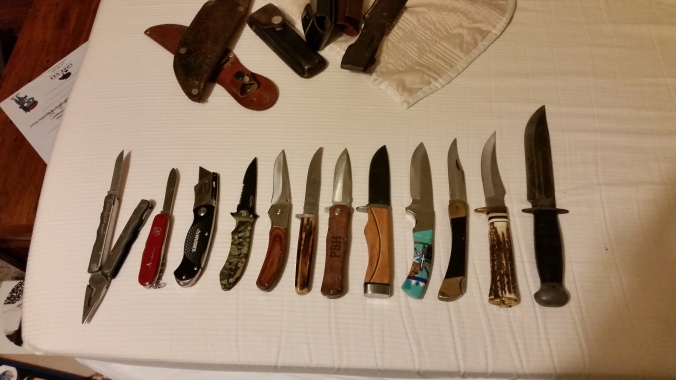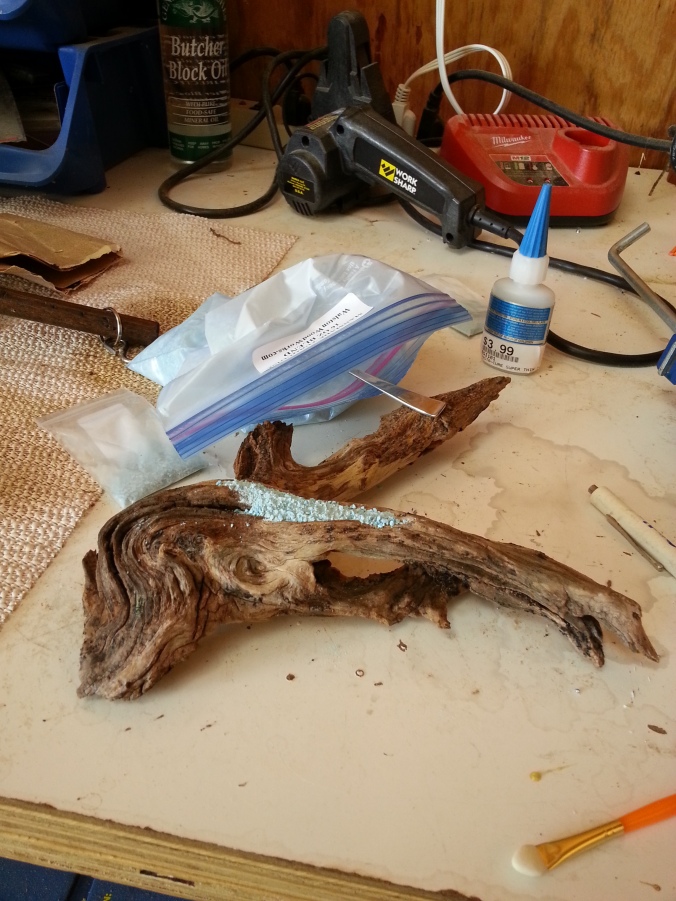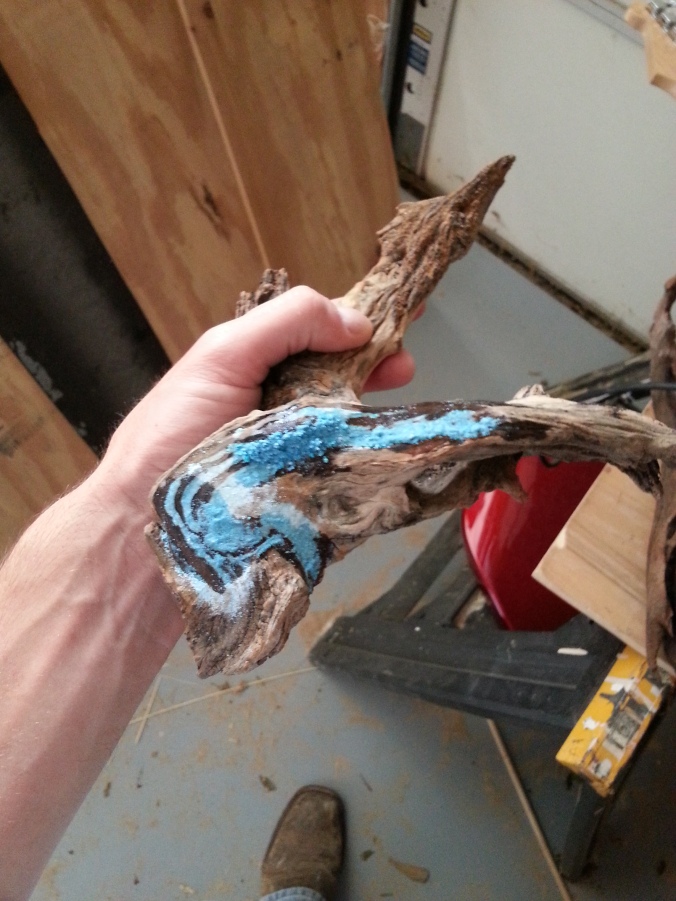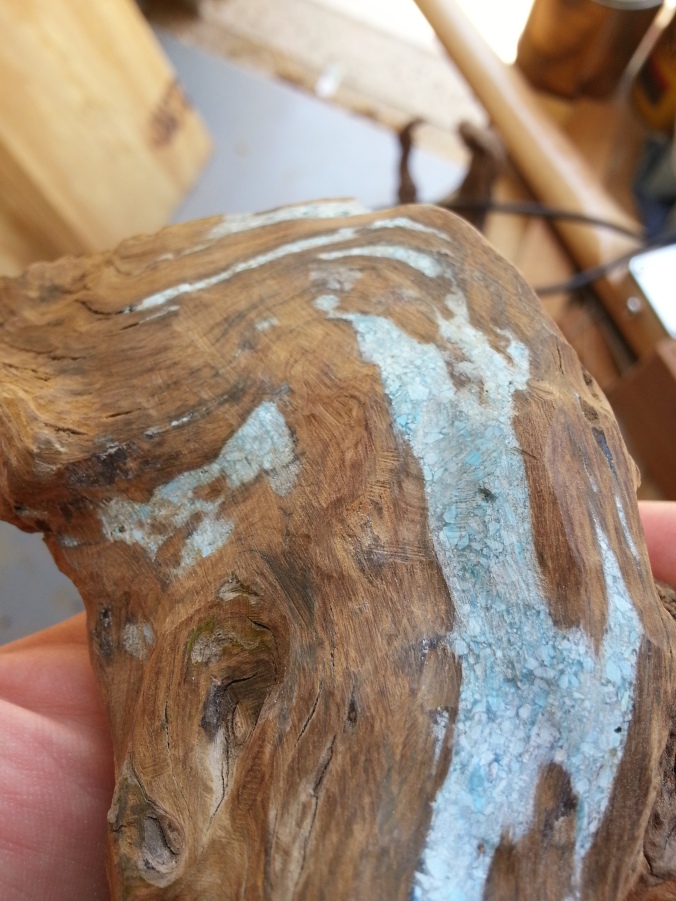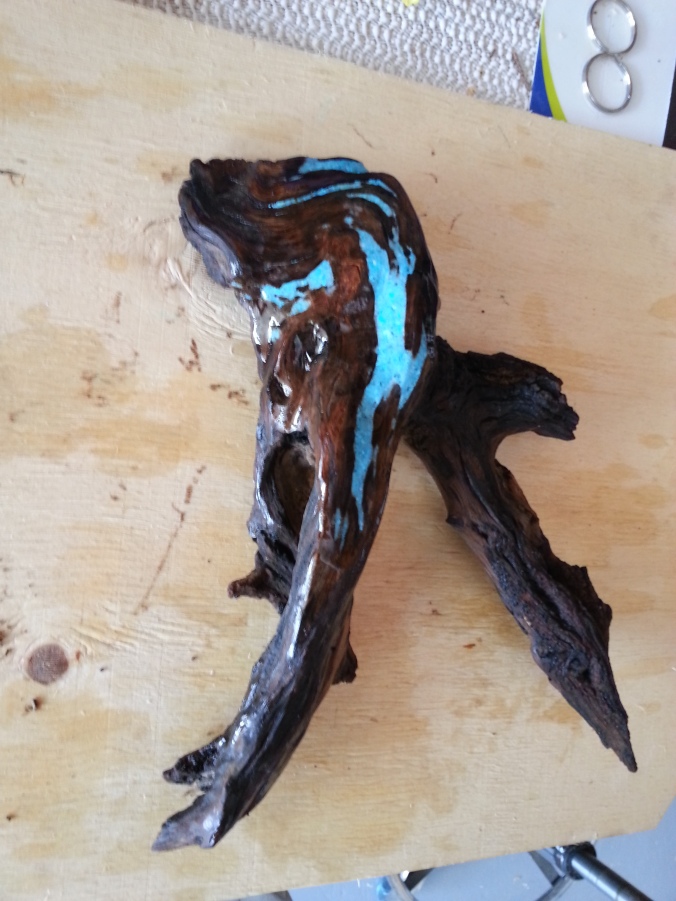No real progress pictures to speak of, but I can describe the process for this one.
I bought a handleless knife off Amazon because it was on sale and the reviews were good. To my surprise, when it arrived it was beefier and heavier than I expected.
I started with a spare block of oak I had from a tree that had fallen a while back. After getting it to the rough dimensions, I used a bandsaw to make a curved cut dividing it into two pieces. I then cut two strips of veneer walnut and two strips of veneer maple to size, and glued them into the middle of the two oak pieces. I set clamps, let it dry for a day, and then used a bandsaw and sand paper to get it to the shape I wanted.
For safe handling, I always give the blade a few wraps of painter’s tape at the start to avoid cutting myself while working.
I finished the handle with a few applications of Watco Danish Oil, and glued it to the tang while screwing the pommel down firmly.
(Side note/Disclaimer: I have heard that certain oils don’t work well with red oak or cedar, but I haven’t had any problems in the past. Apparently one should “avoid putting oil (or Danish oil) on aromatic cedar or any of the dalbergia woods (rosewood, cocobolo, tulipwood). These woods contain an antioxidant that will prevent the oil from curing.” Source)
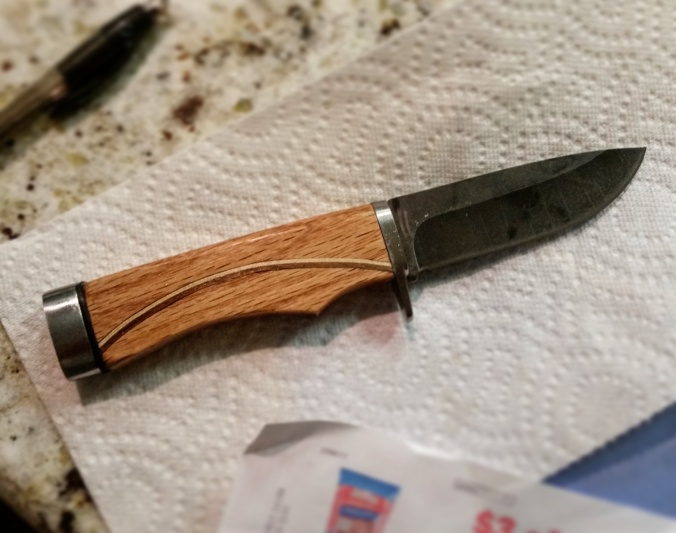
Thanks for reading! Bonus picture of my ever-expanding knife collection:
